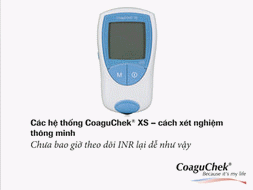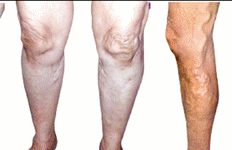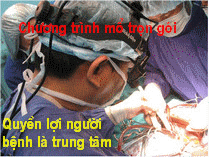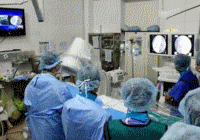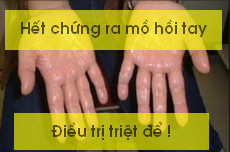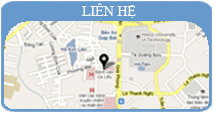| Chỉ mục bài viết |
|---|
| Dẫn lưu màng phổi |
| 2 |
| Tất cả các trang |
Trang 2 trong tổng số 2
Indications
-
Pneumothorax
- Open or closed
- Simple or tension
-
Hemopneumothorax
-
Hydrothorax
-
Patients with penetrating chest wall injury who are intubated or about to be intubated
-
Considered for those about to undergo air transport who are at risk for pneumothorax
Contraindications
-
The need for emergent thoracotomy is an absolute contraindication to tube thoracostomy.
-
Relative contraindications include the following:
- Coagulopathy
- Pulmonary bullae
- Pulmonary, pleural, or thoracic adhesions
- Loculated pleural effusion or empyema
- Skin infection over the chest tube insertion site
Equipment
-
Chest tube drainage device with water seal (autotransfuser unit is an option)
- Suction source and tubing
- Sterile gloves
- Preparatory solution
- Sterile drapes
- Surgical marker
- Lidocaine 1% with epinephrine
- Syringes, 10-20 mL (2)
- Needle, 25 gauge (ga), 5/8 in
- Needle, 23 ga, 1.5 in; or 27 ga, 1.5 in; for instilling local anesthesia
- Blade, No. 10, on a handle
- Large and medium Kelly clamps
- Large curved Mayo scissors
- Large straight suture scissors
- Silk or nylon suture, 0 or 1-0
- Needle driver
- Vaseline gauze
- Gauze squares, 4 x 4 in (10)
- Sterile adhesive tape, 4 in wide
- Chest tube of appropriate size
- Man - 28-32F
- Woman - 28F
- Child - 12-28F
- Infant - 12-16F
- Neonate - 10-12F
Technique
-
Obtain informed consent from the patient or patient’s representative.
-
Assemble the drainage system and connect it to the suction source. The appearance of bubbles in the water chamber is a sign that the chest tube drainage device is functioning properly.
-
Position the patient as described above.
-
Identify the patient using two identifiers (eg, name and date of birth). If possible, match the patient's identifiers at his or her bed side with the identifiers present on a chest x-ray or CT scan that was recently performed (preferably, one performed at the patient's bed side). Clearly mark the site of chest tube insertion (right or left).
-
Identify the fifth intercostal and the midaxillary line.
- The skin incision is made in between the midaxillary and anterior axillary lines over a rib that is below the intercostal level selected for chest tube insertion.
- A surgical marker can be used to better delineate the anatomy.
-
Wear sterile gloves, gown, hair cover, and goggles or face shield, and apply sterile drapes to the area.
-
Administer analgesia.
- Administer a systemic analgesic (unless contraindicated).
- Use the 25-ga needle to inject 5 mL of the local anesthetic solution into the skin overlying the initial skin incision, as shown below.
 Local anesthesia.
Local anesthesia. - Use the longer needle (23 or, preferably, 27 ga) to infiltrate about 5 mL of the anesthetic solution to a wide area of subcutaneous tissue superior to the expected initial incision. Redirect the needle to the expected course of the chest tube (following the upper border of the rib below the fifth intercostal space), and inject approximately 10 mL of the anesthetic solution into the periosteum (if bone is encountered), intercostal muscle, and the pleura.
- Aspiration of air, blood, pus, or a combination thereof into the syringe confirms that the needle entered the pleural cavity.
-
Adding more local anesthetic to the intercostal muscles and pleura at this time is recommended.
-
Use a closed large Kelly clamp to pass through the intercostal muscles and parietal pleura and enter into the pleural space, as shown.
 A closed and locked Kelly clamp is used to enter the chest wall into the pleural cavity. Make sure to guide the clamp over the upper margin of the rib.
A closed and locked Kelly clamp is used to enter the chest wall into the pleural cavity. Make sure to guide the clamp over the upper margin of the rib.
- This maneuver requires some force and twisting motion of the tip of the closed Kelly clamp.
- This motion should be done in a controlled manner so the instrument does not enter too far into the chest, which could injure the lung or diaphragm.
- Upon entry into the pleural space, a rush of air or fluid should occur.
-
The Kelly clamp should be opened (while still inside the pleural space) and then withdrawn so that its jaws enlarge the dissected tract through all layers of the chest wall as shown. This facilitates passage of the chest tube when it is inserted.
 Once the Kelly clamp enters the pleural cavity, the clamp should be opened to further enlarge the opening.
Once the Kelly clamp enters the pleural cavity, the clamp should be opened to further enlarge the opening. -
Use a sterile, gloved finger to appreciate the size of the tract and to feel for lung tissue and possible adhesions, as shown in the image below. Rotate the finger 360º to appreciate the presence of dense adhesions that cannot be broken and require placement of the chest tube in a different site, preferably under fluoroscopy (ie, by interventional radiology).
 A finger is used to palpate the tract and feel for adhesions before insertion of the chest tube.
A finger is used to palpate the tract and feel for adhesions before insertion of the chest tube. -
Measure the length between the skin incision and the apex of the lung to estimate how far the chest tube should be inserted.
- If desired, place a clamp over the tube to mark the estimated length.
- Some prefer to clamp the tube at a distal point, memorizing the estimated length.
-
Grasp the proximal (fenestrated) end of the chest tube with the large Kelly clamp and introduce it through the tract and into the thoracic cavity as shown.
 The proximal end of the chest tube is held with a Kelly clamp that is used to guide the chest tube through the tract. The distal end of the chest tube should always be clamped until it is connected to the drainage device.
The proximal end of the chest tube is held with a Kelly clamp that is used to guide the chest tube through the tract. The distal end of the chest tube should always be clamped until it is connected to the drainage device. -
Release the Kelly clamp and continue to advance the chest tube posteriorly and superiorly. Make sure that all of the fenestrated holes in the chest tube are inside the thoracic cavity.
-
Connect the chest tube to the drainage device as shown (some prefer to cut the distal end of the chest tube to facilitate its connection to the drainage device tubing). Release the cross clamp that is on the chest tube only after the chest tube is connected to the drainage device.
 Connection of the chest tube to a drainage system.
Connection of the chest tube to a drainage system. -
Before securing the tube with stitches, look for a respiration-related swing in the fluid level of the water seal device to confirm correct intrathoracic placement.
-
Secure the chest tube to the skin using 0 or 1-0 silk or nylon stitches, as depicted below.
 A 0 or 1-0 silk or nylon suture is used to secure the chest tube to the skin.
A 0 or 1-0 silk or nylon suture is used to secure the chest tube to the skin.
- Securing sutures: Two separate through-and-through, simple, interrupted stitches on each side of the chest tube are recommended. This technique ensures tight closure of the skin incision and prevents routine patient movements from dislodging the chest tube.
- Each stitch should be tightly tied to the skin, then wrapped tightly around the chest tube several times to cause slight indentation, and then tied again.
- Sealing suture: A central vertical mattress stitch with ends left long and knotted together can be placed to allow for sealing of the tract once the chest tube is removed.
-
Create an occlusive dressing to place over the chest tube by turning regular gauze squares (4 x 4 in) into Y-shaped fenestrated gauze squares and using 4-in adhesive tape to secure them to the chest wall, as shown below. Make sure to provide enough padding between the chest tube and the chest wall.
 Preparation of a Y-shaped fenestrated drain gauze from regular gauze (4 x 4 in).
Preparation of a Y-shaped fenestrated drain gauze from regular gauze (4 x 4 in). Apply support gauze dressing around the chest tube and secure it to the chest wall with 4-in adhesive tape.
Apply support gauze dressing around the chest tube and secure it to the chest wall with 4-in adhesive tape. -
Strap the emerging chest tube on to the lower trunk with a "mesentry" fold of adhesive tape, as this avoids kinking of the tube as it passes through the chest wall. It also helps reduce wound site pain and discomfort for the patient. All connections are then taped in their long axis to avoid disconnections.
Complications
Minor complications of thoracostomy tube placement such as unresolved/reaccumulation of pneumothorax or misplacement of the tube (too deep/kinked) are common and approach approximately 30%.[11]
- Improper placement
- Horizontal (over the diaphragm) - Acceptable for hemothorax; should be repositioned for pneumothorax (See the image below.) The chest tube is angulated, overlying the diaphragm.
- Subcutaneous - Must be repositioned
- Placed too far into the chest (against the apical pleura) - Should be retracted
- Placed into the abdominal space - Should be removed
- Bleeding
- Local - Usually responds to direct pressure
- Hemothorax (lung vs intercostal artery injury) - Might require thoracotomy if it does not resolve spontaneously
- Hemoperitoneum (liver or spleen injury) - Requires emergent laparotomy
- Organ penetration (usually requires surgical repair)
- Stomach, colon, or diaphragm - Occurs as a result of unrecognized diaphragmatic hernia
- Lung - Occurs as a result of pleural adhesions or use of a thoracostomy tube trocar
- Liver or spleen – See hemoperitoneum above
- Tube dislodgement
- Empyema - Chest tube (foreign object) could introduce bacteria into the pleural space
- Retained pneumothorax or hemothorax - Might require insertion of a second chest tube
Ý kiến bạn đọc (0)

Viết Ý kiến bạn đọc
